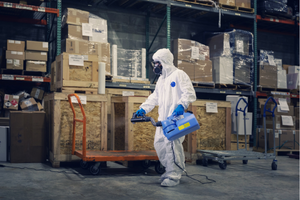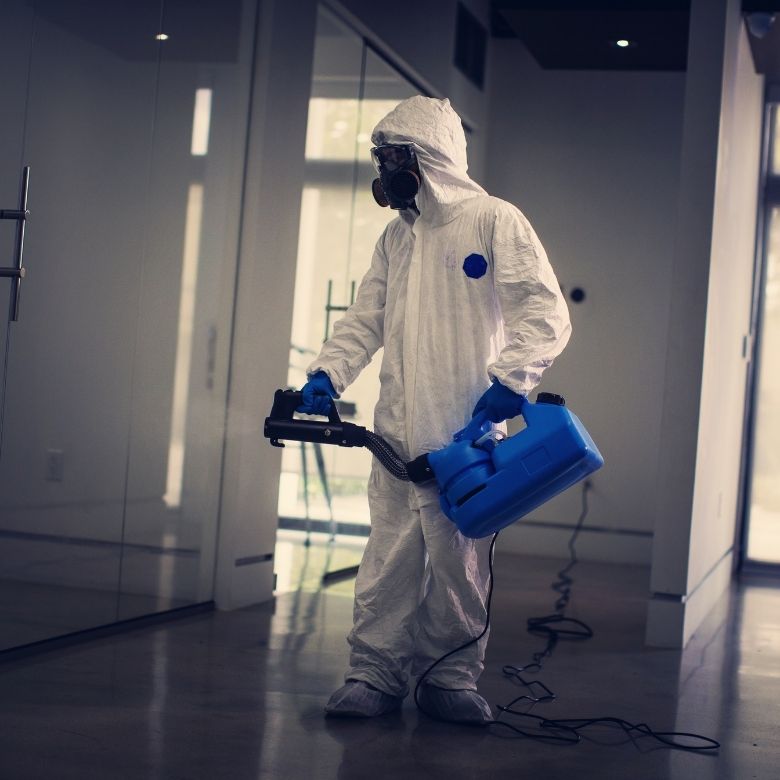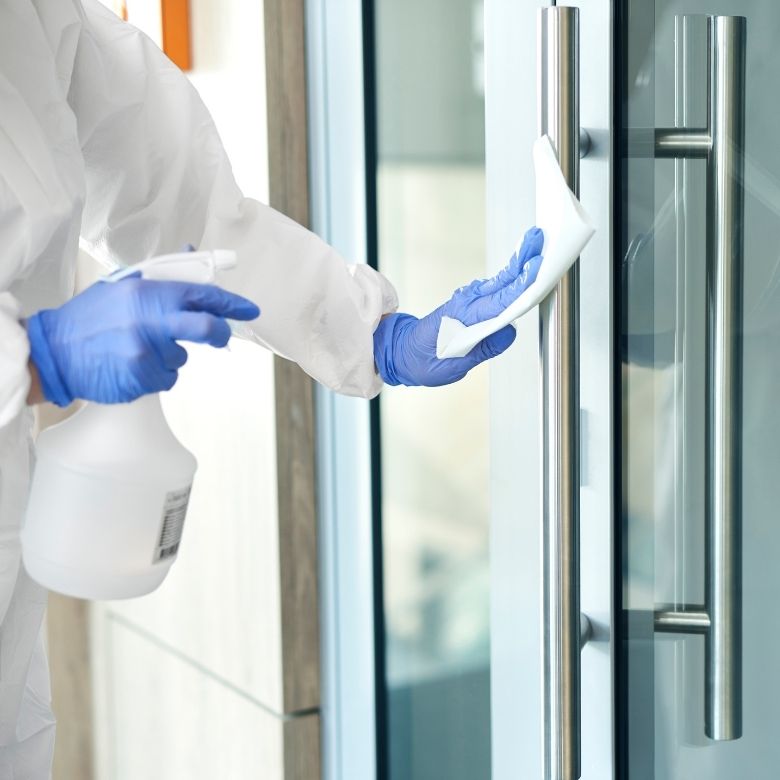In the last two years, the word “disinfection” has regularly been used in every context. However, it is worth remembering that neutralising harmful pathogens such as viruses, bacteria, fungi, and moulds is not just a task for pandemics, but one of the important steps towards improving the quality of our daily lives. One of the technologies that effectively supports room sanitisation is ozone disinfection. We explain how household and industrial ozonators work, what you can use them for, and how to safely disinfect your home with ozone.

What is ozone and how is it formed?
The distinctive smell in the air, which is particularly noticeable shortly after a thunderstorm, is due to ozone, a triatomic oxygen structure that is produced in nature as a result of lightning strikes. Ozone (O3) is an intensely oxidising gas with a strong but short-lasting effect. This is due to the fact that allotropic ozone molecules easily react with other chemicals, as a result of which they are reduced, decaying into “traditional” diatomic oxygen (O2).
Biocidal properties of ozone for effective disinfection
Due to its very strong oxidising properties, ozone is an extremely effective biocide that is commonly used in the disinfection of various types of facilities and rooms. Studies show that ozone disinfection has up to 50 times better results than disinfection with chlorine. At the same time, this method of treatment is fully ecological and, with basic precautions, completely safe for the environment, people and animals.

Ozonation and disinfection – where are they used?
Of course, in order to effectively neutralise microorganisms in the air and on various surfaces, a suitable ozone generator, commonly referred to as an ozonator for disinfection, is required. This type of device uses an electrical corona discharge, which results in the generation of certain amounts of ozone. It is worth noting here that on the market you can find both small O3 generators, designed for ozonation and disinfection of homes and cars, as well as much larger and significantly more efficient industrial ozonators.
Due to its properties and biocidal effectiveness, ozone disinfection works well in places and facilities such as:
- single-family houses and apartments,
- hotels, restaurants, shopping malls,
- hospitals, doctor’s offices, laboratories,
- warehouses and production halls,
- food, document, industrial machinery,
- drinking water and sewage.
However, this is not the end of the story. Car services use ozone to disinfect and de-fungify air conditioning installations, and to clean and refresh the cabin. Ozonation of cars in the era of the COVID-19 pandemic has also become a common practice for car rental companies to decontaminate their vehicles.

Ozonator for disinfection – what are the advantages?
It is worth highlighting here the previously mentioned biocidal properties of ozone, which make this gas perfectly capable of neutralising all kinds of pathogens. It is not only ruthless to germs, but also allergy-friendly, so you can safely use ozone as an effective household disinfectant. The most important advantages of ozonation are certainly:
- neutralisation of bacteria, viruses, fungi, spores, and mould,
- effective elimination of mites and other allergens,
- gas penetration into hard-to-reach nooks and crannies,
- possibility of safe disinfection of interiors in medical facilities,
- high efficiency in neutralising unpleasant odours: cigarette smoke, burning, dampness,
- possibility of using ozonators to disinfect the apartment after quarantine.
Unlike some air fresheners, ozone eliminates the source of unpleasant odours (bacteria, moulds, fungi), instead of only masking them. For this reason, ozone decontamination is a process that is carried out, among others, after floods, smoking, fires, and deaths.
Is ozone for disinfection safe?
While maintaining the basic safety rules and provided the rooms are properly prepared, disinfecting the apartment with ozone is completely safe. Remember to take the plants and animals out of the room before starting ozonation. You should also not stay inside during disinfection. Once decontamination is completed, the interiors still need to be thoroughly aired out before they can be used again.

Professional disinfectants – support for ozonation
Home ozone disinfection – although very effective – is not an activity that can be carried out on a daily basis. In order to maintain the effects of ozonation, it is worth choosing professional disinfectants intended for household and professional use. A wide range of effective and safe preparations is available from the PCC Group. The range of products includes hand disinfectant liquids, antibacterial gels and soaps, large surface disinfectants, and highly effective spray disinfection products, such as ROKO® PROFESSIONAL ANTI-VIRUS+ Hand and surface disinfectant. Solutions for both household and industrial use guarantee safe and effective disinfection, even under the most demanding conditions.
- https://www3.epa.gov/npdes/pubs/ozon.pdf
- https://www.ncbi.nlm.nih.gov/pmc/articles/PMC7595067/